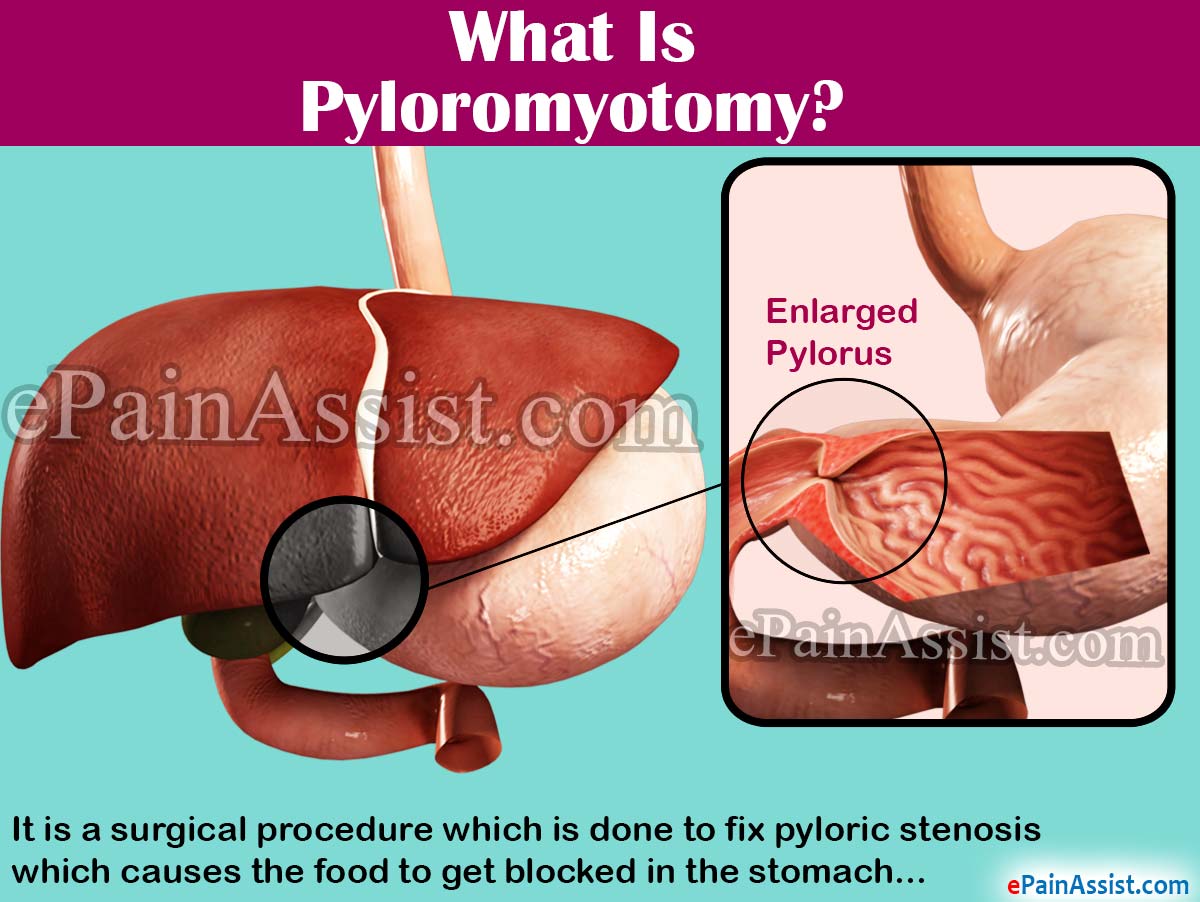Pyloromyotomy: This is a surgical procedure done for treatment of Pyloric Stenosis. Pyloric Stenosis is a medical condition found in infants, in which the muscles of the opening between the stomach and the small intestine get thickened resulting in the food being blocked from entering into the small intestine from the stomach. This condition is corrected by a surgical procedure called Pyloromyotomy. This article tells about the how a Pyloromyotomy procedure is done, its indications, and what is done in the postoperative phase.

Some Facts About Pyloric Stenosis
- As stated, in Pyloric Stenosis the muscles of the Pylorus, which is the opening between the stomach and the small intestine, gets thick and thus prevent food from entering into the small intestine
- Pyloric stenosis is said to be a congenital disorder which means that if a member of a family has this condition then there is a high likelihood that the baby will also develop this condition
- Pyloric Stenosis is found more in boys
- Pyloric Stenosis is a difficult condition to detect
What Is Pyloromyotomy?
Pyloromyotomy as stated is a surgical procedure, which is done to fix pyloric stenosis which causes the food to get blocked in the stomach resulting in the stomach to be full always and causing the baby to vomit after each feeding. This results in significant amount of loss of vital electrolytes from the body creating an electrolyte imbalance. Before proceeding with Pyloromyotomy, the treating team will make sure that all the electrolytes lost are replenished. This is done intravenously. Once the electrolytes are adequately replenished then the baby is taken to the OR for a pyloromyotomy.
What Are The Indications For Pyloromyotomy?
A pyloromyotomy procedure is indicated when there is a confirmed diagnosis of a Pyloric Stenosis. In Pyloric Stenosis, the baby will have the following symptoms:
- Frequent vomiting after feeds
- Excessive irritability
- Less voiding and passing of stools
- No significant weight changes
On physical examination of the abdomen, the physician will be able to palpate an olive-shaped lump. There will also be observation of peristaltic waves in the abdomen which is one more positive sign of a Pyloric Stenosis. An ultrasound of the abdomen will confirm the diagnosis of a Pyloric Stenosis. A Pyloromyotomy is then indicated after confirmation of the diagnosis.
How Is Pyloromyotomy Procedure Done?
After successful induction of anesthesia by the anesthesiologist, the surgeon then inserts an instrument through a small incision called a laparoscope to look at the thickened muscles of the pylorus. An instrument is then inserted through the laparoscope in order to separate the thickened muscles of the pylorus and thus creating an opening for the food to pass freely. The approximate time taken for the surgery is about half hour. After successful completion of the procedure, the infant is then taken to the Postanesthesia Care unit or the PACU for observation.
What Is Done In The Recovery Phase Post-Pyloromyotomy?
- The incisions made for Pyloromyotomy is usually very small of approximately an inch and are covered with Steri-Strips.
- For a few hours postsurgery, the baby is not allowed to be fed after which clear liquids are started. After around 24 hours postsurgery, formula food or breast milk is started.
- Non-aspirin pain medications are given for any pain the baby may experience.
- The baby may be kept overnight for observation in the hospital to monitor the breathing.
- Majority of infants are discharged home postprocedure within two days. Complete recovery from the procedure usually takes about one week. A clear change in eating habits with the baby wanting more food may be observed following Pyloromyotomy.
Are There Any Complications Associated With Pyloromyotomy Procedure?
There are rare complications after a Pyloromyotomy procedure of bleeding and infection, but the likelihood is extremely low. Pyloromyotomy procedure also prevents risk of future stomach or intestinal problems.
Also Read:
